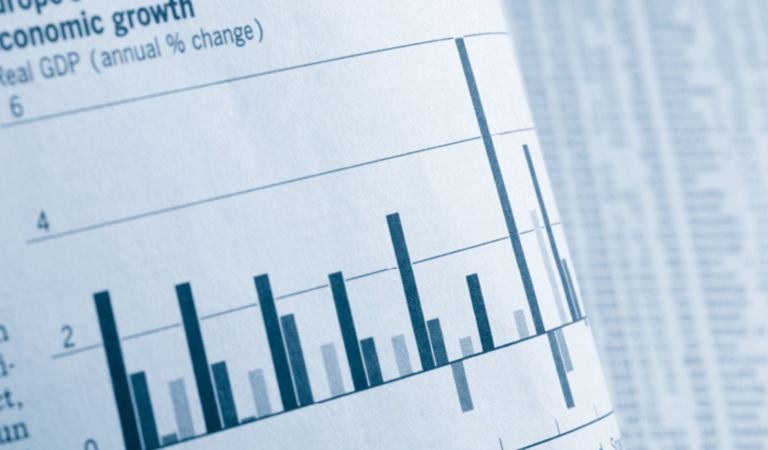Equities
Global equities (+4.1%) rose in December, ending the year with a 22.2% gain. The US Federal Reserve (Fed) surprised markets by signaling lower interest rates in 2024, sparking a stock rally that rippled across the globe and increasing speculation about sharp reductions in policy rates across developed markets in 2024. The Fed’s policy shift was accompanied by steeper declines in inflation across many economies and a precipitous drop in bond yields, which significantly eased financial pressures on companies, households, and governments. More emerging market (EM) countries began to reduce interest rates during the month, while the European Central Bank (ECB) and the Bank of England (BOE) pushed back against market forecasts of sizable interest-rate cuts next year despite concerns about weak economic growth. The Bank of Japan (BOJ) gave no clear signals on the timing of its shift away from negative interest rates as board members were divided on the country’s progress toward a sustainable 2% inflation rate. China’s government faced greater pressure to intensify its policy support as the country’s economic recovery remained hampered by ongoing turmoil in the property sector and lackluster consumer demand. A series of attacks by Iran-backed Houthi rebels on commercial ships in the Red Sea escalated tensions in the Middle East, heightening pressure on the US and other countries to protect trade and keep the conflict from expanding into a larger regional war.
US
US equities (+4.5%) surged as a faster-than-anticipated decline in inflation spurred the Fed to signal interest-rate cuts in 2024. Gains broadened beyond those of the “Magnificent Seven,” with small-cap stocks (Russell 2000 Index) delivering their best monthly performance since November 2020. As expected, policymakers left interest rates unchanged in a targeted range of 5.25% – 5.5%. However, investors were surprised by Fed Chair Jerome Powell’s dovish tone and the Fed’s Summary of Economic Projections, which showed the median fed funds rate in the range of 4.5% – 4.75% at the end of 2024, implying a 75 basis points (bps) reduction in interest rates during the year. Financial markets subsequently priced in 150 bps of cuts by year end, although Powell pushed back on the market’s aggressive forecast. The abrupt shift in policy expectations sent Treasury yields sharply lower, with easing financial conditions adding more fuel to the equity rally. The significant rise in stocks in November and December elicited some concerns about extended positioning and sentiment, particularly given the headwinds to consumer spending, downside risks to corporate earnings, and uncertainty about economic growth due to the lagged impact of previous rate hikes. Nevertheless, disinflation momentum was encouraging for the Fed and a key impetus for equities; the Fed’s preferred measure of inflation — the Personal Consumption Expenditures Price Index — increased only 0.1% at the core level in November (up 3.2% from a year ago). This translates to an annualized core inflation rate of 1.9% over the last six months, meaning that the Fed will have achieved its 2% target if the current trend is sustained.
Economic data released during the month helped reinforce growing sentiment that the US economy could achieve a “soft landing.” The labor market continued to cool but remained resilient. In November, headline nonfarm payrolls rose by a larger-than-expected 199,000, largely due to an increase in government and health care jobs and the resolution of labor strikes. Job openings continued to trend downward, while initial jobless claims rose modestly but still signaled a relatively low level of layoffs. The unemployment rate dipped to 3.7%, and average hourly earnings increased by an annualized 4.0%, matching October’s gain and consensus estimates. Better-than-expected consumer spending in November helped dispel lingering pessimism about the economy; retail sales rebounded 0.3% following a downwardly revised 0.2% decline in October, while personal consumption expenditures rose 0.2% alongside a 0.4% increase in personal income. The Conference Board’s Consumer Confidence Index surged to 110.7 in December — the largest increase since early 2021 — as improved views of the present situation and future expectations coincided with greater intentions to purchase big-ticket items. Falling mortgage rates offered hopes of a revival in the housing market in 2024, although borrowing costs are still twice as high as they were in 2021, prices remain lofty, and inventory is limited. In November, existing-home sales edged up from a 13-year low, new-home construction unexpectedly surged to a six-month high, and building permits continued to increase.
The manufacturing sector contracted at a slower pace in December, as the Institute of Supply Management (ISM) Manufacturing Index increased to 47.4, from 46.7. Production and employment remained weak, but improved modestly, while subdued demand helped to further depress output prices. The ISM Services Index rose 0.9 points to 52.7 in November, but high borrowing costs, the resumption of student loan payments, and a slowing labor market pose headwinds for the sector in the months ahead. The National Federation of Independent Businesses Small Business Optimism Index edged slightly lower, with respondents indicating a further deterioration in credit conditions and their capital spending plans.
Ten of the 11 sectors in the S&P 500 Index (+4.5%) posted positive results. Real estate (+8.7%) was the best-performing sector. Consumer discretionary also outperformed, led by hotels, restaurants & leisure (+7.0%). Financials (+5.4%) rose, led by banks (+11.1%) and capital markets (+9.8%). Communication services (+4.8%) also outperformed, driven higher by interactive media & services (+6.3%). Energy (-0.0%) was the worst-performing sector during the period. Utilities (+1.9%) and consumer staples (+2.7%) also underperformed.
Europe
European equities (+3.4%) advanced in December. The downturn in the eurozone’s business sector stretched into the final month of 2023, extending a contraction that began in June, amid the strains from inflation, high borrowing costs, and weak global trade. The HCOB Flash Eurozone Composite Purchasing Managers’ Index (PMI) continued to drop in December as the manufacturing and services sectors recorded further declines in new business inflows and work backlogs, while employment fell for the second consecutive month. This increased the eurozone’s recession potential and posed risks to the ECB’s forecast of 0.1% economic growth in the fourth quarter. Against a backdrop of ebbing inflation and lackluster growth, the ECB and the central banks of Switzerland and the UK left interest rates unchanged, while Norway’s Norges Bank unexpectedly hiked rates by 25 bps to 4.5% to combat persistent inflation. However, the swift decline in eurozone inflation from 2.9% to 2.4% in November — the lowest since August 2021 and only modestly above the ECB’s 2.0% target — intensified views that the ECB will begin to cut interest rates in the second quarter of 2024. European Union (EU) finance ministers reached an agreement on the EU’s fiscal rules, allowing more time to reduce public debt and creating incentives for public investment. Third-quarter earnings for companies in the STOXX 600 Index are forecast to decline by 11.1% from a year earlier.
Europe’s manufacturing sector remained stuck in contraction in December; the HCOB Eurozone Manufacturing PMI registered 44.4, a slight improvement from 44.2 in November. Output continued to fall, and factories shed jobs for a seventh successive month, while contractions in new orders and purchasing activity eased. Encouragingly, business confidence edged up to an eight-month high, and input costs and output prices declined. The HCOB Flash Eurozone Composite PMI revealed that services sector activity contracted for the fifth consecutive month but at the softest pace in the recent sequence of declines, while prices rose at the fastest rate since July.
In Germany (+3.1%), Chancellor Olaf Scholz’s government coalition reached a deal with the country’s finance minister on a budget draft for 2024, resolving a political and fiscal crisis that was triggered by a constitutional court ruling in November. The last-minute agreement averted a financial shutdown in January and plugged a projected €17 billion fiscal gap. Despite the budget crisis, the ZEW Indicator of Economic Sentiment in December advanced to a nine-month high, reflecting an improved economic outlook amid growing expectations of interest-rate cuts by the ECB. In the UK (+3.8%), the S&P Global/CIPS Flash Composite PMI lifted to a six-month high of 51.7 in December led by a faster recovery in services. Despite hawkish rhetoric from the BOE, a surprisingly large drop in headline inflation from 4.6% to 3.9% in November — the lowest in more than two years — heightened speculation that the BOE will cut interest rates sooner than previously believed amid a sluggish economy.
Pacific Basin
Pacific Basin equities (+1.9%) ended the month higher. Australia’s (+7.5%) economy slowed more than expected in the third quarter as GDP expanded only 0.2% from the prior quarter. The higher cost of living drove year-over-year household-consumption growth to its lowest level since the first quarter of 2021, with the savings rate dropping to a level not seen since 2007. These figures are likely to dampen concerns about demand-driven inflation pressures. The Reserve Bank of Australia left interest rates unchanged to assess the impact of prior interest-rate increases, with cooling inflation and a softening labor market suggesting its policy tightening has gained traction. In a midyear update of the government’s 2023 – 2024 budget, Treasurer Jim Chalmers forecast sluggish economic growth over the coming year, but the budget does not include a forecast for recession.
In Singapore (+6.1%), core inflation edged lower to 3.2% year over year in November, giving the central bank more scope to extend its monetary policy pause at its next meeting in January. Encouragingly, a preliminary estimate showed that GDP accelerated to 2.8% in the fourth quarter, from 1.0% in the third quarter, although Prime Minister Lee Hsien Loong warned of a “troubled” international environment that will weigh on economic growth and security, reiterating an official projection of 1% – 3% growth in 2024. Singapore’s non-oil domestic exports grew for the first time in more than a year, although the 1% expansion fell short of expectations of 1.5% and was mainly attributable to a low base a year earlier. Singapore’s monetary regulator ordered remittance companies in the city state to halt the use of non-bank and non-card channels for money transfers to China, following a fund-freeze scare by Chinese authorities.
Japan’s (-0.5%) economy shrank at the sharpest pace since the height of the pandemic, complicating the BOJ’s monetary policy path amid speculation that it is closer to exiting its lengthy cycle of negative interest rates. GDP declined at a 2.9% annualized rate in the third quarter, worse than consensus estimates, as high inflation started to adversely impact consumer spending. Economic indicators released during the month pointed to a patchy and fragile economic recovery, highlighted by stronger-than-expected retail sales, a modest drop in industrial production, and a decline in core inflation to 2.5% year over year in November, down from 2.8% in October. However, surprisingly upbeat sentiment among a wide range of Japanese manufacturing and services companies in the BOJ’s Tankan survey bodes well for the economy and bolstered the government’s and BOJ’s hopes for wage increases, which could pave the way for policy normalization. Investors continued to wager that the BOJ will soon unwind its ultra-easy stimulus, but the recent rise in the yen reversed after the bank left interest rates unchanged and maintained its yield curve policy. BOJ Governor Kazuo Ueda offered no clues on the timing of policy normalization and indicated that more time is needed to ascertain whether a cycle of sustainable wage growth and inflation is in place. He alluded to various options to phase out monetary easing, adding that the BOJ is unlikely to issue an explicit warning of an impending rate hike.
Emerging Markets
EM equities (+3.2%) advanced in December. Latin America was the best-performing region, followed by Europe, the Middle East, and Africa (EMEA), and Asia.
Latin American equities (+6.6%) accelerated amid expectations of lower US interest rates in 2024 and ongoing policy rate cuts in the region. Peru (+24.5%) closed out a tumultuous year with a massive gain as interest rates were lowered for the fourth consecutive time in response to the expectation that inflation will stabilize within the central bank’s target range. Peru’s government recently announced a package of new stimulus measures to invigorate the struggling economy, with the central bank forecasting GDP to contract 0.5% in 2023 before expanding 3% in 2024. In Colombia (+9.2%), Labor Minister Gloria Inés Ramírez announced that the minimum wage would increase by 12% in 2024, and President Gustavo Petro vowed to keep diesel subsidies in place. Lower unemployment and cooling inflation in Brazil (+5.7%) ushered another 50 bps cut by the central bank, lowering the Selic rate to 11.75%. In Mexico (+6.7%), interest rates held steady at 11.25%, as inflation is anticipated to descend slowly amid strong exports to the US.
EMEA (+3.8%) equities advanced. Saudi Arabia (+7.4%) projected a small decrease in revenues in its 2024 budget, hoping that large spending plans on mega projects will boost the non-oil economy and offset lower revenue from extended oil production cuts and lower oil prices. The Finance Ministry projected GDP to grow by 4.4% in 2024. In Poland (+6.7%), centrist party leader Donald Tusk became the country’s prime minister, paving the way for a new pro-EU government that vowed to restore democratic standards and improve ties with allies. The central bank expects interest rates to decline next year but left them unchanged in December, with weak domestic economic activity and prior rate hikes continuing to support disinflation. In South Africa (+2.8%), inflation in November cooled for the first time in four months as decreasing fuel prices outweighed food cost pressures, while third-quarter GDP contracted slightly from the previous quarter. Hungary’s (+5.4%) Prime Minister Viktor Orban blocked the EU from approving a €50 billion financial aid package for Ukraine after EU leaders agreed to open accession negotiations for Ukraine to join the bloc. Talks are set to resume in January, with optimism that a deal will be struck.
Asia equities (+2.7%) rose as India (+7.9%) and South Korea (+6.6%) benefited from heavy inflows from international investors who repositioned their portfolios. India’s stock market rose to record highs amid robust growth across many industries, a favorable economic outlook, and optimism about the country’s potential to become a more significant part of global supply chains. State polling results boosted Prime Minister Narendra Modi’s reelection bid. In China (-2.5%), a lack of major policy announcements, a tepid economic recovery, and additional regulation in the video gaming market weighed on sentiment as foreign capital continued to exit the country. Moody’s cut China’s credit outlook to negative amid concerns about rising debt levels and risks to economic growth as the government resorts to fiscal stimulus to support local and regional governments and contain the impacts of the property crisis.
Fixed Income
The year ended on a positive note as the prospects of a “soft landing” for the US economy gained momentum. Most fixed income sectors posted positive total returns driven by a rally in government bonds and outperformed duration-equivalent government bonds on an excess return basis.
US data releases were mixed. Consumer sentiment improved, bolstered by the expectations and current conditions components. The headline and core Consumer Price Index both inched up slightly, while personal spending rose and retail sales advanced, driven by holiday spending and lower gas prices. Slower hiring during the holiday season lifted weekly jobless claims. The ISM Manufacturing PMI contracted on sustained weakness in post-pandemic demand. Pending home sales were flat, while new-home sales declined amid lower inventory and higher mortgage rates. The HCOB Eurozone Manufacturing PMI remained in contractionary territory, retail sales declined on weak demand across most categories, and annual inflation printed below consensus estimates. Germany’s factory orders dropped on lower export orders, and the IFO Business Climate Index moderated. UK inflation fell more than anticipated; however, high borrowing costs deterred prospective home buyers. China’s industrial production advanced, boosted by growth in mining, manufacturing, and utilities. Japan’s industrial production registered its first decline in three months, and housing starts slowed at the fastest pace since August. Canada’s industrial production slipped, while consumer confidence remained flat. Australia’s third-quarter GDP grew less than expected, owing mainly to weakness in household spending and trade activity.
Most major central banks left their policy rates unchanged, while divergences on future monetary policy paths were in focus as policymakers faced ultra-dovish market pricing. The Fed pivoted toward interest-rate cuts, but the ECB and the BOE pushed back against expectations for rate cuts amid persistent domestic price and wage pressures. The BOJ maintained its yield-curve control policy, insisting on further scrutiny of the wage-inflation cycle. The Norges Bank surprised markets with a 25 bps rate hike as inflation rebounded.
Global sovereign bond yields declined as a fresh batch of soft inflation prints and weaker macroeconomic data boosted the likelihood of rate cuts. The US Treasury 10-year yield fell on rising expectations that the Fed may begin reducing rates as soon as March. In Europe, Germany’s 10-year Bund yield fell to a nine-month low as continued weakness in the eurozone’s economic activity supported investor expectations of a more dovish ECB in 2024. UK gilt yields extended their decline amid rising anticipation of rate cuts. Ten-year Japanese government bond yields dropped after the BOJ maintained its negative interest-rate policy. In EM, Brazil’s central bank implemented its fourth consecutive 50 bps rate cut and signaled it would continue to lower rates at this pace beyond next month’s meeting. The People’s Bank of China kept policy rates unchanged, although investors expect monetary easing in 2024. The Bloomberg TIPS Index delivered a total return of 2.69%, and the 10-year breakeven inflation rate decreased by 8 bps to 2.17% during the month.
Global credit bonds outperformed duration-equivalent government bonds as spreads tightened. Within the securitized sectors, agency mortgage-backed securities, commercial mortgage-backed securities, and asset-backed securities outperformed duration-equivalent government bonds. Within EM, local markets debt (+3.21%) underperformed external debt (+4.73%), in US-dollar terms. Spread tightening contributed positively to external debt performance, and a decrease in US Treasury yields also benefited results. Appreciation in EM currencies drove positive performance within local markets, and movement in EM rates also helped results.
Currencies
The US dollar depreciated versus most major currencies, steered by lower Treasury yields, expectations of Fed rate cuts, and a downward revision to third-quarter GDP. Among the G10, the Norwegian krone led the gains as the Norges Bank hiked its policy rate while other major central banks kept rates on hold. The Japanese yen registered good gains against the US dollar, bolstered by solid consumer spending data and speculation that the BOJ will soon exit its ultra-loose policy. In EM, most currencies in the Asia Pacific and Latin America gained versus the US dollar. The Mexican peso continued to benefit from compelling interest-rate differentials, record remittances from the US, robust foreign direct investment, and export revenue. The Turkish lira weakened further, to a record low, after a significant minimum wage hike fueled inflation fears.
Commodities
Commodities (-3.3%) declined in December. Industrial metals and precious metals generated positive returns, while energy and agriculture & livestock registered negative results. Within energy (-5.2%), heating oil (-6.7%), crude oil (-5.1%), gas oil (-4.5%), and gasoline (-3.3%) fell as major oil shipping companies began returning to the Red Sea despite escalating tensions in the Middle East. Oil prices were also pressured by slacking energy demand in the US and China and near record-high output in the US. US natural gas (-7.4%) continued to slide given high inventories and light demand amid forecasts of warmer-than-normal temperatures.
Industrial metals (+3.8%) ended higher. Aluminum (+8.4%) surged due to a massive fuel depot explosion in the capital of Guinea, which spurred concerns about a shortage of material to make alumina, the substance used for aluminum production. Zinc (+7.8%) surged after a shutdown of Nyrstar’s two US zinc mines and low Chinese production stoked supply worries. Copper (+1.2%) advanced as the prospect of earlier-than-expected interest-rate cuts by major central banks and a continued economic recovery in China increased optimism about the industrial sector. Nickel (-0.3%) drifted slightly lower against a backdrop of muted consumption but increasing production and inventories in the exchange warehouses. Lead (-2.7%) fell as a December market report from the International Lead and Zinc Study Group showed that the global supply of lead exceeded demand by 41,000 tons in the first 10 months of 2023.
Precious metals (+0.5%) were buoyed by gold (+1.1%), with geopolitical unrest in the Middle East boosting demand for the perceived safe-haven asset. Expectations of interest-rate cuts in 2024 also supported prices. Although falling Treasury yields are typically a positive tailwind for precious metals, increasing odds of a global recession weighed on silver (-5.7%).
Agriculture & livestock (-2.7%) slid lower. Wheat (+3.8%) rose on concerns about the safety of shipping in the Black Sea after Ukrainian missiles struck a Russian warship in Crimea. Coffee (+2.4%) was bolstered by reduced global production estimates by the US Department of Agriculture, low coffee inventory, and strength in the Brazilian real. Additionally, persistently dry conditions and water shortages in Vietnam’s Central Highlands and Brazil caused worries about weather-related damage to coffee crops. Cotton (+1.6%) ended higher as inflation continued to cool and the economic outlook improved. Cocoa (-1.5%) retreated, with the International Cocoa Organization trimming its 2022 – 2023 estimate for the global cocoa deficit due to weaker global demand. Feeder cattle (+1.6%) rose as supplies of market-ready cattle in the feedlots remained tight, while live cattle (-1.5%) declined as the direct-cash cattle markets were essentially at a standstill. Corn (-2.0%) fell amid plentiful supplies but weaker demand. Lean hogs (-4.5%) ended lower due to a higher slaughter rate compared to the same time last year. Soybeans (-4.3%) fell as production was projected to reach a record level in the US and Brazil for the 2023 – 2024 period. Sugar (-20.6%) plummeted as increasing rainfall in the growing regions helped improve the supply outlook. Additionally, India’s recent ban on sugar cane juice and syrup for ethanol production in the 2023 – 2024 supply year to boost sugar reserves also put downward pressure on the crop price.































Monthly Market Review — November 2025
Continue readingBy